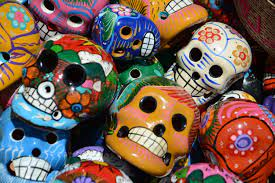Being Hispanic is hard to define, each Hispanic defines who they are different. Being Hispanic means a shared similarity between people, and who they are.
We share food, music, clothing, and traditions, and we deal with discrimination and fight to find identity, especially in America.
Bringing light to what it means to be Hispanic will always be a constant effort.
The United States Census Bureau says being Hispanic means you descend from Spanish-speaking countries, including Spain and many Central American countries.
There is much more beyond a basic definition of what it means to be Hispanic though, we are not just a definition, we are people.
So what does being Hispanic mean?
What being Hispanic means to me
I was born in Guatemala and adopted by White parents in America when I was 8 months old. Guatemala is an impoverished country, and many people work very labor-intensive jobs or don’t get much education.
My birth mother didn’t have enough support and money to raise me, so she decided to give me up for a possible better future.
Since I never learned Spanish, that has made understanding my identity much harder. I don’t look American enough to pass or act as White. I don’t speak Spanish, so I wasn’t Hispanic enough to fit in with other Hispanics.
Sometimes, I wish I could have traditions besides eating hotdogs on the fourth of July.
Hispanic Culture
Although different, what brings all Hispanics together is our shared culture. What we love bonds us and connects us.
Our traditions like Nochebuena having Christmas on the 24 of December, the Day of the Dead celebrating our loved ones who have passed, and Quinceaneras for girls who have turned 15 and reached womanhood.
All these important events link us to our ancestors, each other, and our families.
Guatemalan food, Spanish music, and culture are important to me. My favorite Hispanic food is empanadas and pupusas, and my favorite Spanish band is The Marías.
When talking about her culture, Evelin Garcia, a junior Mexican student, said that she loved listening to Spanish music, and her favorite artists were Bad Bunny, Vicente Fernández, old Spanish music, and Banda music.
Rodriguez also said her favorite Hispanic food was tamales. Rodriguez said she loves Spanish music and never really listened to English music and her favorite food is arepas.
We each love something about our culture and what we love and what we share is what it means to be Hispanic.
Discrimination
An unfortunate occurrence that most Hispanics face is discrimination.
Juliana Gonzalez, a senior Columbian student, said, “People call me Mexican just because I am brown. I don’t think there should be a problem with discrimination,” said Gonzalez. “I don’t see why they treat us the way they do.”
When asked if she had ever been discriminated against for being Hispanic, Mariangel Rodriguez Cardenas, a sophomore who is Venezuelan, said, “Yes multiple times because people aren’t educated enough to know what Hispanics are.”
Discrimination is widespread in the United States, in my community, and even at Leesville. Hispanics being discriminated against isn’t anything new.
All Hispanics remember when Donald Trump persuaded a portion of the country that Hispanics should return to their countries and that the United States should build a wall.
Pew Research Center said that 54% of Hispanic adults have experienced racism, and 48% of Hispanic adults have heard racist Hispanic jokes.
65% of African American adults have said they have experienced racism, only 11% more than Hispanics experience. We are overlooked in awareness of racism, and discrimination compared to other advocated minority groups.
Language Barriers
There were days when classmates would ask me why I didn’t speak Spanish, or when other Hispanics would ask me questions in Spanish, and I would have to let them down by telling them I couldn’t speak my cultural language. I wish every day Spanish came more easily to me.
Identity in the Hispanic community in America can be a big struggle. Many students face hardships being bilingual, and trying to fit into two different cultures.
“At the beginning, when I didn’t speak English, it was hard,” said Rodriguez Cardenas. “But, when I learned it [English], it was hard, too, because I spoke Spanish then switched to English, and then back to Spanish.”
Only 12% of students at Leesville High School are Hispanic according to the National Center for Education and Statistics.
When Hispanic Heritage Month started Leesville didn’t have any events or announcements until a week or two after the month had started on September 15.
In February of the 2021-2022 school year during Black History Month, Leesville celebrated with a Black History Spirit week, having a theme for every day, and Black-written literature read every day. Hispanic culture is something everyone should know about and be educated on as well.

I’m Abby and like fashion, music, reading, and nature. Fun fact: I own over 20 plants.
